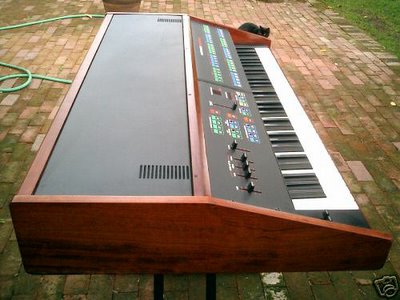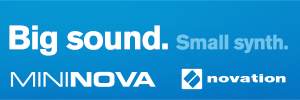
"Here are some observations I have on the instrument:
1) Like Hakken says, it takes a long time to learn. I now have nice Sitar music comming out of it. I'd say if you were a keyboard player, it would be harder to learn than if you were a violin, or steel guitar player. It's more like a violin than a keyboard in my opinion.
2) It is >10 finger polyphonic. I think it might be up to 16 finger polyphonic. You can sit on one side of it, and a friend can sit on the other side, and you can both play at the same time. -- WILD
3) There is considerable difference between the Firewire output's capability and MIDI's capability. This is a bit involved, so I'll do this in subsections to this point:
3a) With MIDI, (and I may be a bit wrong about some of this, for I'm still figuring MIDI out on it), you might have, say 10 notes active at the same time. You can set up MIDI on the fingerboard to send out on a single channel, so all 10 notes would be on one channel. If you do that, it is easy to patch to soft synths, BUT any pitch-bend information sent by wiggling a finger back and forth affects ALL the notes.
3b) You can also set up MIDI so that each note is sent on its own channel. This is, of course, better, but I've had a lot of trouble getting softsynths to listen to all channels properly. If you put the softsynth in OMNI mode, it seems the pitchbend problem occurs again. I may have something wrong here, and will figure it out some day I'm sure
3c) If you use the Kyma, these restrictions are gone, as the instrument tracks each finger position (x and y axis) and pressure (z axis) perfectly, and with great finesse.
4) Lippold just released new firmware with a nice legato feature. It's like a fretless device, so if you put your finger down slightly to the left, your sound is slightly lower. That being said, you can also activate pitch rounding, so your initial touch is pitch perfect.
5) I've had great success playing analog gear with the Continuum. Just realize that there is some complexity due to the fact that each finger can have its own pitch-bend, and depending on your MIDI destination's capabilities, you can either have full awesomeness, or tell the fingerboard to make some MIDI compromises. This is all of course, just living with MIDI's issues.
6) Holy the thing rocks when used creatively. I now pretty much use only the fingerboard and a Marimba Lumina, and my music sounds A LOT more fun than it did before. It's hard to describe what you can do with the fingerboard in words. Here are some goofy things I've done with it:
- Map different samples to different pressures, with granulation based on the y axis. This sounds lame, until you realize it's not a keyboard, and you can do things like keep your finger in a single position, and strum up and down with great precision to a beat. So your finger becomes like an LFO. Then you can map the y-axis to a granulator, etc...
- Amazing for plucked guitars: listen to Ed Eagan's stuff on the http://www.hakenaudio.com/Continuum/ website. He shared a lot of his sounds, and it only took about 2 weeks for me to get about 1/2 as good as he is with all those Sitar style sounds.
- It's an awesome ambient sound generator. If you're doing soundtrack style music, you can sort of connect your soul to the fingerboard, and watch your movie, and really capture a lot of emotional gestures that are very workable."










































